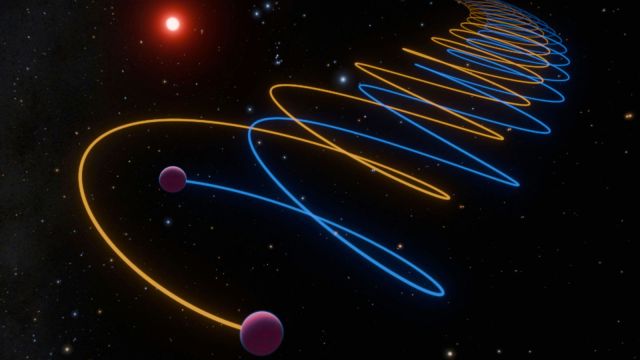A recent study has confirmed that a celestial object known as Gliese 229B, previously thought to be a single entity, is actually a pair of brown dwarfs orbiting each other. This discovery sheds light on the complexities of celestial systems and the nature of brown dwarfs.
Background on Gliese 229B
- What is Gliese 229B?
- Gliese 229B is the first known brown dwarf, discovered three decades ago.
- Brown dwarfs are often referred to as “failed stars” due to their mass, which is greater than that of gas giant planets but less than that of stars.
- Initial Puzzlement
- Scientists were perplexed by Gliese 229B’s dimness relative to its mass, which led to questions about its true nature.
Research Methodology
- Observational Techniques
- Astronomers utilized the Very Large Telescope in Chile to gather light and chemical information from Gliese 229B.
- The analysis revealed that the object is actually a binary system, consisting of two brown dwarfs in close orbit around one another.
Significance of the Discovery
- Resolving Discrepancies
- Kevin Luhman, an astronomer from Pennsylvania State University, noted that this finding resolves a significant discrepancy regarding the object’s characteristics.
- Distance from Earth
- The brown dwarf twins orbit a small star located approximately 18 light-years away from Earth. To put this into perspective, a light-year is about 5.8 trillion miles.
- Insights into the Universe
- Rebecca Oppenheimer, a co-author of the study from the American Museum of Natural History, remarked that this discovery illustrates the bizarre nature of the universe and highlights the diversity of solar systems compared to our own.
Implications for Future Research
- Potential for More Discoveries
- The discovery of these twins raises the possibility that there are more brown dwarfs with hidden partners yet to be found. Jerry Xuan from the California Institute of Technology emphasized this potential for uncovering similar celestial systems.
Publication
The findings of this study were published in the journal Nature on Wednesday.
Multiple-Choice Questions (MCQs):
- What is Gliese 229B classified as?
- A) A gas giant
- B) A planet
- C) A brown dwarf
- D) A star
Answer: C) A brown dwarf
- How far is the Gliese 229B system from Earth?
- A) 10 light-years
- B) 18 light-years
- C) 25 light-years
- D) 30 light-years
Answer: B) 18 light-years
- Which telescope was used to observe Gliese 229B?
- A) Hubble Space Telescope
- B) Very Large Telescope
- C) Keck Observatory
- D) Arecibo Observatory
Answer: B) Very Large Telescope
- What does Kevin Luhman state about the discovery?
- A) It adds to existing knowledge about brown dwarfs.
- B) It resolves a significant discrepancy.
- C) It contradicts previous theories.
- D) It has no significant implications.
Answer: B) It resolves a significant discrepancy.
- What is the potential implication of discovering the brown dwarf twins?
- A) There may be fewer stars than previously thought.
- B) There could be other brown dwarfs with hidden partners.
- C) All brown dwarfs are single entities.
- D) Brown dwarfs cannot orbit other stars.
Answer: B) There could be other brown dwarfs with hidden partners.
